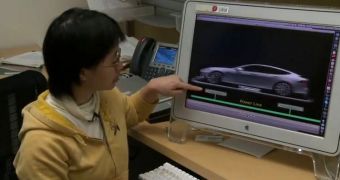One of the main difficulties associated with using electric cars today is the fact that they have a limited range on existing battery packs. Researchers at the Stanford University think they can address this challenge by constructing highways that use wireless energy transfer to recharge batteries on the go.
Wireless power is a viable solution, the research team believes. Applying this technology would imply installing magnetic field generators underneath the pavement. These devices would transmit large amounts of electricity between themselves.
When spaced just a few feet apart, these generators could therefore produce large amounts of current that could be harvested by specialized components aboard electrical vehicles. No type of contact would be needed between the two; an electric car would just have to drive over the charging system.
This approach could be extremely efficient at recharging batteries, according to simulations conducted by the research team. Details of how the system would function were published in the latest issue of the esteemed scientific journal Applied Physics Letters.
“Our vision is that you'll be able to drive onto any highway and charge your car. Large-scale deployment would involve revamping the entire highway system and could even have applications beyond transportation,” says Shanhui Fan.
The Stanford associate professor of electrical engineering adds that the range of electrical vehicle could be expanded considerably and reducing their operating and purchase costs. Eventually, more people could be persuaded to make the switch from internal combustion to electric engines.
This charge-as-you-drive system would ensure that range would be eliminated from an electric car's specifications sheet. At this point, limited ranges are a major dealbreaker for many people.
“What makes this concept exciting is that you could potentially drive for an unlimited amount of time without having to recharge. You could actually have more energy stored in your battery at the end of your trip than you started with,” says Richard Sassoon, a coauthor of the new investigation.
He holds an appointment as the managing director of the Stanford Global Climate and Energy Project (GCEP), the organization that partially funded the investigation.
According to Fan, the electricity transfer between two magnetic coils will only fuel battery packs on cars tuned to a specific resonance frequency. “Wireless power transfer will only occur if the two resonators are in tune. Objects tuned at different frequencies will not be affected,” she concludes.

 14 DAY TRIAL //
14 DAY TRIAL // 